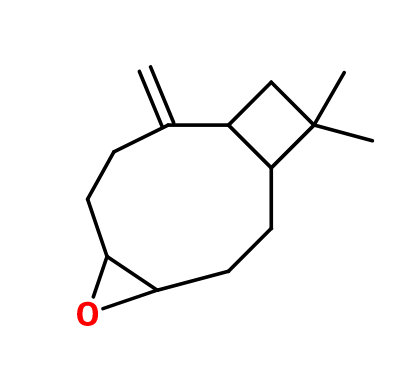
Photo credits: ScenTree SAS
| Company | Ingredient Name | ID | Comments | Naturality | Certifications | Purity | Latin name | Treated part | Geographical origin | MOQ |
|---|---|---|---|---|---|---|---|---|---|---|
|
|
Caryophyllene Oxide | CL-605 |
Visit website
|
Natural |



|
100 | Eugenia caryophyllus | Clove Oil | Indonesia | 50 Kgs |
General Presentation
-
CAS N° : 1139-30-6
-
EINECS number : 214-519-7
-
FEMA number : 4085
-
FLAVIS number : Donnée indisponible.
-
JECFA number : 1575
-
Appearance : Colorless crystal
-
Density : 0,948 @20°C
-
Volatility : Base
-
Price Range : Data not available.
Physico-chemical properties
-
Molecular formula : C15H24O
-
Molecular Weight : 220,35 g/mol
-
Log P : Donnée indisponible.
-
Fusion Point : 64°C
-
Boiling Point :
-
Detection Threshold : Donnée indisponible.
-
Optical rotation : Donnée indisponible
-
Vapor pressure : Donnée indisponible
-
Refractive Index @20°C : Donnée indisponible
-
Acid Value : Donnée indisponible.
-
Flash Point : Donnée indisponible.
Uses
Uses in perfumery :
Year of discovery :
Data not available.
Natural availability :
Caryophyllene oxide can be found in a broad range of perfume materials. Among them, patchouli EO, some aromatics such as Lavender EO or species of the artemisia genus. Also contained in numerous spices such as peppers and cinnamon. In general, it is common to find caryophyllene oxide in ingredients with a high level of Caryophyllene-Beta. In the vast majority of cases, it shows up as trace.
Isomerism :
Data not available.
Synthesis precursor :
The Caryophyllene oxide is not a precursor to the synthesis of another compound of olfactive interest.
Synthesis route :
Data not available.
Regulations & IFRA
Allergens :
This ingredient does not contain any allergen.
IFRA 51th :
This ingredient is not restricted for the 51th amendment


